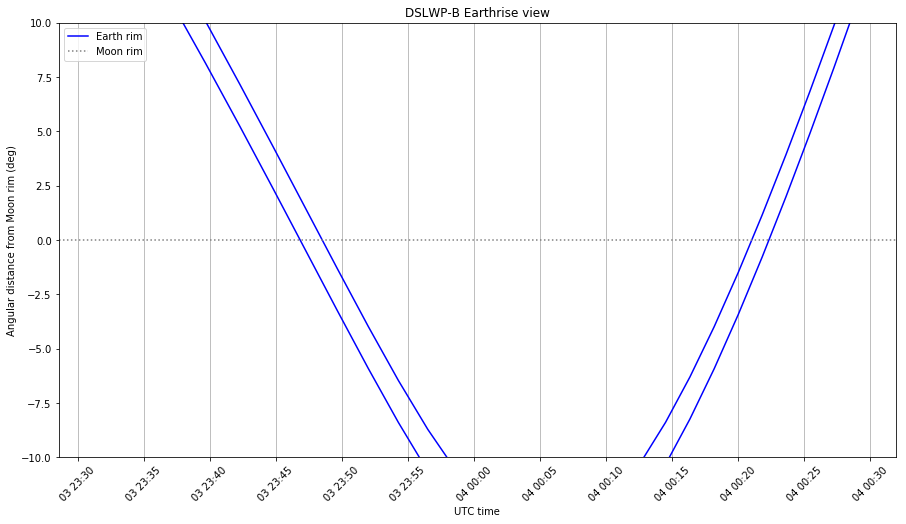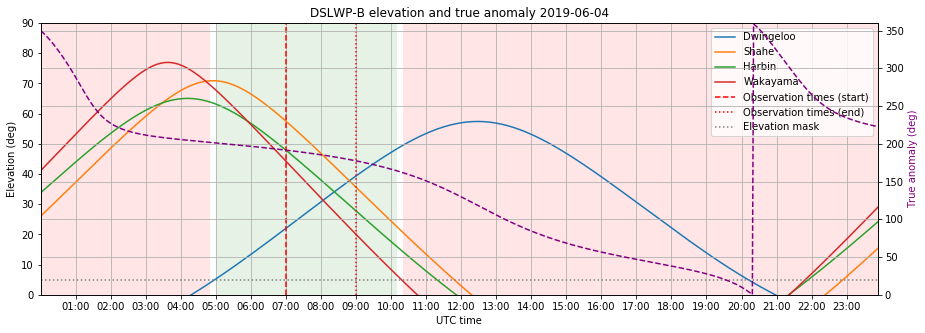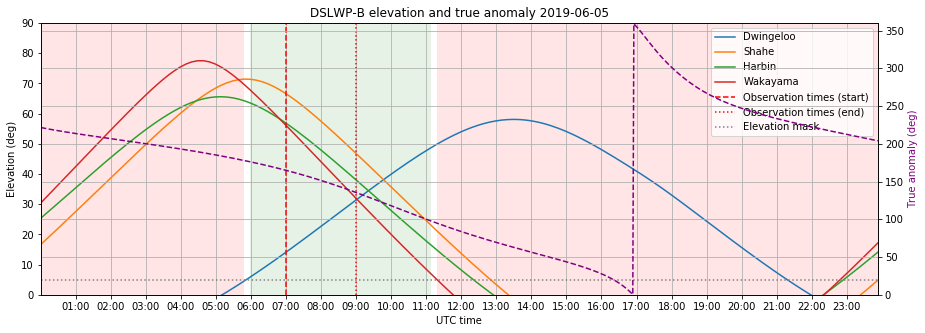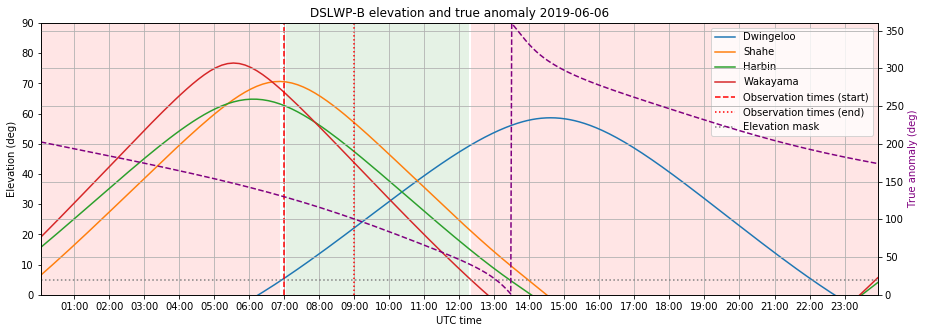Yesterday, Wei Mingchuan BG2BHC sent an email to the team of DSLWP-B collaborators saying that the first week of June would give good opportunities both to take images of the Moon and Earth (as it has been done in other occasions) and to perform VLBI sessions involving Dwingeloo, Shahe, Harbin, and perhaps Wakayama University, which has a 12m dish. Here I show the preliminary plan proposed by Wei and a few graphs useful for camera and VLBI planning.
I have updated my camera planning Jupyter notebook to use the 20190603 ephemeris from dslwp_dev. The figure below shows the camera view.

Wei has proposed to activate the Amateur payload of DSLWP-B on 2019-06-03 03:05:00 UTC, taking a series of 9 images with 10 minutes of spacing, starting at the payload activation. As we can see in the figure above, this is the time when both the Earth and Moon are visible in the camera frame and nearest to the centre of the image, so it is the best occasion for taking images.
During the imaging session, the Earth will hide behind the Moon, giving the opportunity to take “Earthrise” pictures. The graph below, which I call an Earthrise view, shows the angular distance between the Earth and the lunar rim. This can be used to see when the Earth will be hidden behind the Moon. The imaging instants are marked with green lines. We see that there is good coverage of the Earthrise event, so a good animation can be made.

The Earth also hides behind the Moon on two other occasions. No pictures are planned to be taken during these, but the Earthrise plots are shown below for completeness. Note that from the point of view of the groundstations on Earth, these correspond to occultations of DSLWP-B behind the Moon, so they are also interesting for planning VLBI observations.


For planning VLBI observations, we need that DSLWP-B is in view of all the groundstations. We assume an elevation mask of 5º. I have made a VLBI planning Jupyter notebook to plot the elevation of DSLWP-B as seen from each of the groundstations and to mark the time windows when it is above 5º for all the groundstations. The plots are shown in the figures below. Each of them represents a single day.





The windows where the four groundstations are available for VLBI are shown in green, while the remaining time is shown in red. The observation times proposed by Wei are marked with red vertical lines. These are from 07:00 to 09:00 on June 4, 5 and 6, and from 08:00 to 10:00 on June 7.
We see that all the observation windows fall inside the VLBI window (except on June 3, when the activation will be used for imaging). The plan is to take the images on June 3 and then download the images from June 4 to June 7, taking advantage of the long SSDV transmissions to perform VLBI.
Another interesting aspect that I mentioned in my analysis of a previous VLBI experiment is that if VLBI is going to be used for orbit determination, it is desirable to perform observations at different points along the orbit. I have included in the graphs shown above the true anomaly of DSLWP-B as a purple dashed line. This can be used to see where is DSLWP-B in its orbit on each of the VLBI observations. Taking into account the four windows chosen for VLBI, we have an almost continuous coverage of true anomaly between 0 and 200º, which is pretty good.
As I have remarked above, 2019-06-04 00:00 and 2019-06-04 20:30 would also be interesting moments to perform VLBI, since they correspond to occulations of DSLWP-B behind the Moon. However, at 00:00, the Moon is not yet visible in Dwingelooo, so VLBI could only be performed with the much shorter baselines between East Asian stations. At 20:30 the groundstation coverage is rather poor: the Moon is only visible in Dwingeloo, and at a rather low elevation.
Keep in mind that the observation times shown in this post are still a proposal and need to be confirmed. In particular, it is not known if Wakayama will be able to participate in the observations, as they need to replace the feed in the dish. I will update the information as soon as things settle down.
2 comments